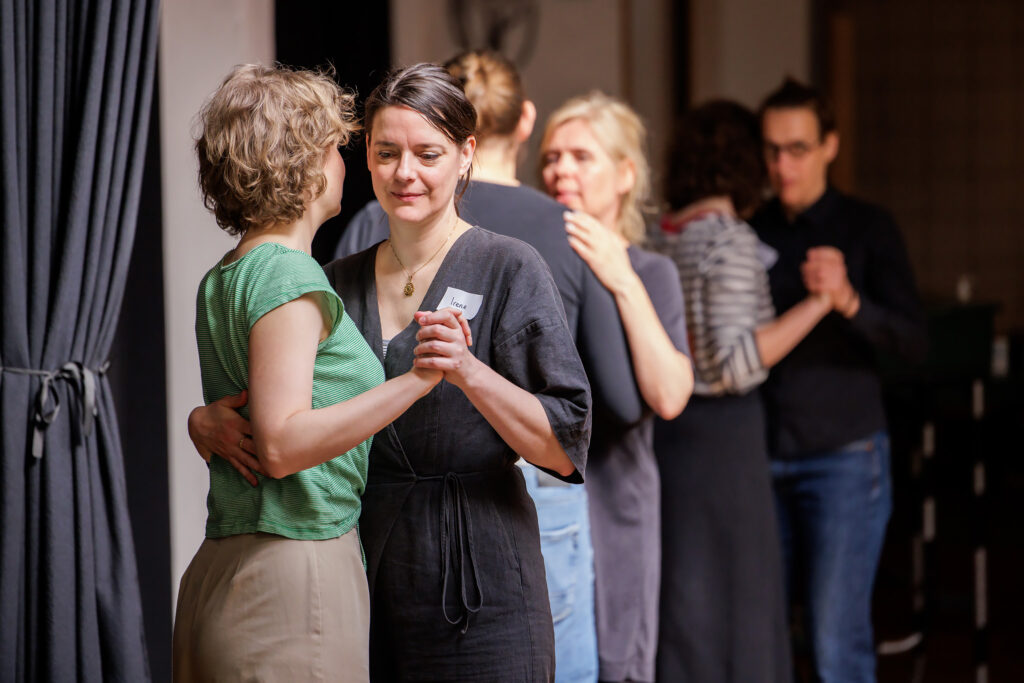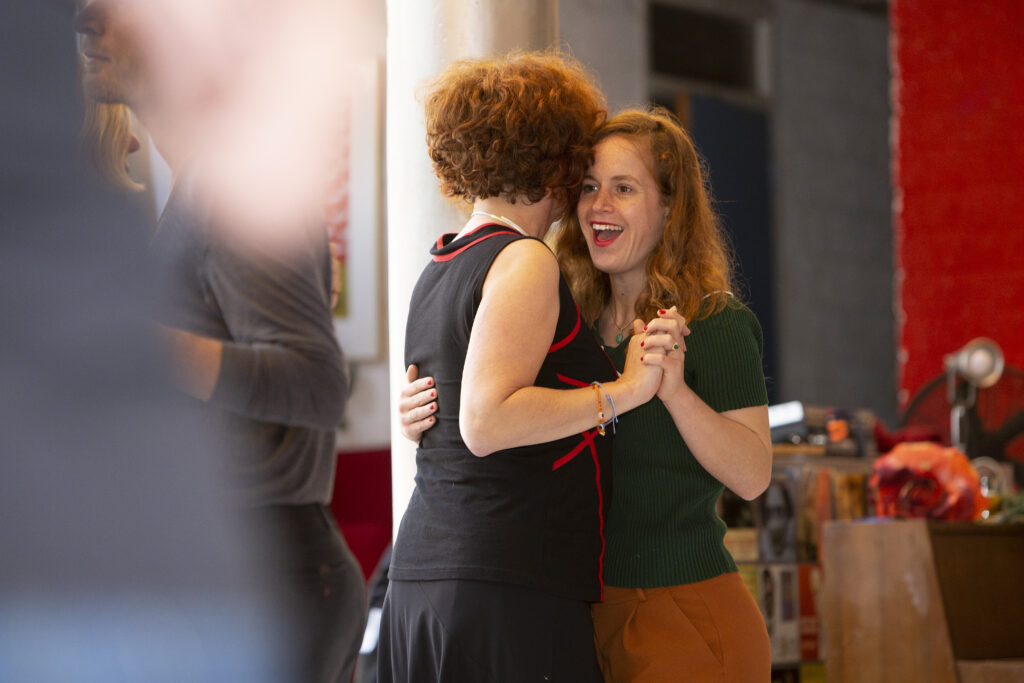Today we are telling you more about the two roles within partnered dancing: leading and following. In swing dances like Slow Bal you will see people dancing both roles. While many traditional partner dances divide the roles along gender, in swing this is less of a custom. Why that is, what the difference is between the roles and how you can find what role suits you best, please keep on reading.

Traditionally in partnered dances, the man dances as a lead and the woman dances as a follow. This is the case for many types of dance. In swing dance this has not been the usual custom for a while. Did you know this was already the case as early as WWII? While the men fought at the front, the women remained so why not lead when going out for an evening dance? The same happened for the men: with fewer women available as follows, the result was that men started dancing as follows. It is therefore perfectly normal to be able to dance both roles.
What does it mean to lead? When you are a lead, you decide what moves are to be danced. Based on the moves, figures and pieces of choreography that you master during classes, or maybe the ones you copy from someone else, the lead is the role that decides how the pair dances. That doesn’t mean you can dictate everything: your follow can steal the show by taking initiative or because you leave room for the follow to do their thing. This adds flavor to your dance.
So how does leading work? It’s not as if you whisper what you want to do while dancing. Leading is something you do with your body. During lessons you can learn how you can use your body to do exactly that. The first thing you need is a good connection: these are the points your body communicates with your follow. In Slow Bal there are several connecting points: hands, back and core. It is mostly a matter of doing it. Because you commit to a move, your follow will have no choice but to follow.

The next questions might be: but don’t followers do anything at all? Of course not! As a follow your task is to listen to the signals your lead sends you and translate them to your dance. You dance what your lead leads. The most difficult aspect is to not anticipate too much what might be coming next but to really listen to what the lead wants you to do. Anticipate too much and you start doing moves your lead hadn’t intended. When dancing as a follow it is all about being in tune with your body and to listen carefully. As a follow you do have space to play around with your footwork. As long as you do not interfere with the connection, swing dances give room to maneuver, even as a follow.
As mentioned above, swing dance isn’t too strict as to what role someone should dance. So being able to do both is a helpful tool. If you can dance both roles, you will have a better understanding of what the other role needs to dance the role. An added bonus is that you can dance with everybody at a social! You can choose to first learn one role and master it but you can already start switching it up during classes. In the Adventurer’s level (intermediate) classes at Slowfeet Studio it is a standard element to the classes. As a bonus challenge.
What rol suits you best is simply a matter of choice. We always hope you can dance the role that you like best when dancing at Slowfeet Studio rather than the role assigned to a certain gender. So our advice is: choose what you like and try both roles out for instance during a workshop, lesson or social.
Would you like to try? Slowfeet Studio is organizing several workshops this summer. The new lessons will start in September, January and March. Check out this page for more information.
